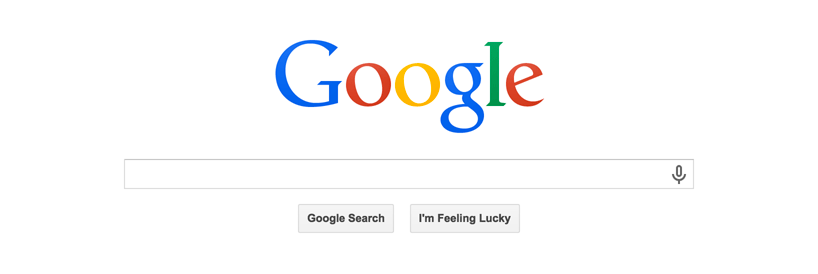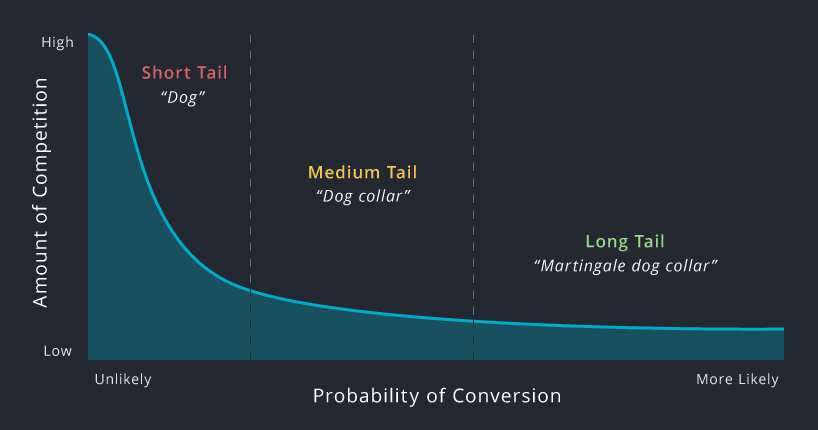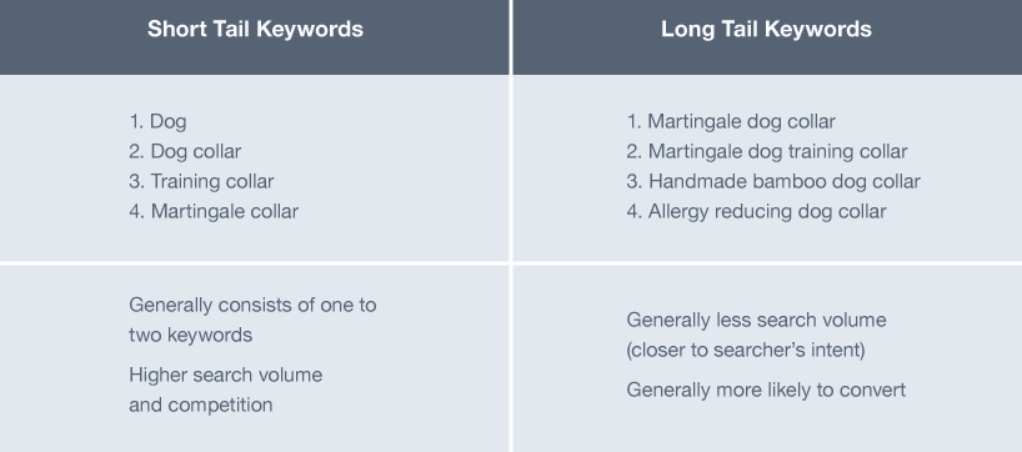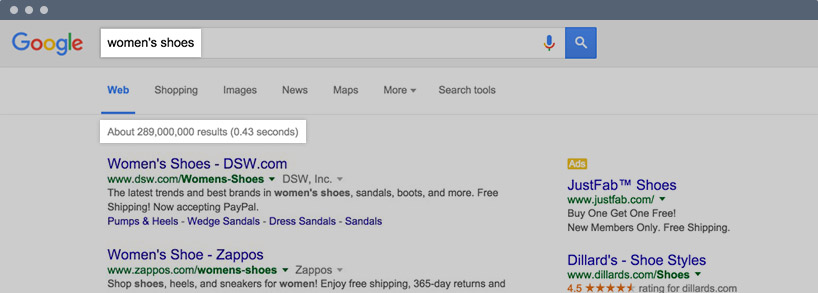How Keywords Work
Chapter 3 (View all Chapters)
How Keywords Work
Search engine optimization (SEO) starts with the words that someone types into a search box.

These words that make up a search query are commonly referred to as “keywords,” a foundational element of SEO.
Since the ultimate goal of your SEO strategy is to help people find your business or products, it makes sense to optimize your site to best match their search queries. Selecting the right keywords and strategically placing them in key areas of your pages (e.g. product, category, blog) isn't rocket science, but it does take a little time and dedication.
The Right Kind of Visitors
It's a common misconception that you need to get as much traffic to your store as possible. While you do need visitors, success is actually about attracting the right kind of visitors. It's also not enough to rank highly for keywords like “pottery” or “t-shirt”. These highly common search terms are referred to as "short tail keywords". They only make up around 30% of all searches and don't typically result in purchases.
The other 70% of search queries are “long-tail keywords” and "middle tail keywords," which are usually longer and more specific. These keywords typically convert better, because they're searched for by people who are ready to buy. A person searching for "t-shirt" might just be killing time online, but someone searching for "best price Star Wars graphic tee" is likely to have their credit card out already.

Consumers using a search engine are typically in one of three modes:
Browsers: These searchers are just exploring — they don't necessarily have a specific goal. They might search for funny cat videos or the history of Japan. They use short, non-descriptive search queries like "cat" or "Japanese history". These searches return hundreds of millions of results, making it hard to compete and be found.
Researchers: Searchers in research mode have a specific topic in mind, and are actively seeking more information on it. This could be someone considering purchasing a camera, and looking up reviews and specifications for a particular model. People in this mode have slightly more specific queries, like "Nikon camera reviews".
Buyers: As an online merchant, this is the mode you want shoppers to be in when they find your products. They are committed to making a purchase, and are performing a search in order to do so. Searchers in this mode are straightforward and detailed with their search queries, like "buy Nikon 16 megapixel digital SLR", "women's white long sleeve cashmere sweater", or "orange bamboo martingale dog collar". These searches return fewer results, meaning it's much more likely for your result to be shown.
Short tail vs Long-Tail Keywords
Short tail keywords are usually three words or less and tend to have higher visibility but more competition. Long-tail keywords are more than three words and will generally have less search volume, but the traffic they bring are more likely to convert.

Here's an example of keywords in action. Someone doing research on fashion trends might do a general search for "women's shoes", and will get literally millions of results.

At the same time, someone who has zeroed in on what they want to buy will do a search for "sparkly red pumps size 7", and receive fewer but far more relevant results.

By uncovering the longer, more specific search terms used by people looking to buy, you can optimize your store's pages to best speak to shoppers and rank with search engines.
Now that you have an understanding of what keywords are, in the next chapter, we'll discuss how to build a keyword strategy using keyword ideas and themes.
 © Copyright 2003 - 2024 BigCommerce Pty. Ltd. Shopping Cart Software
© Copyright 2003 - 2024 BigCommerce Pty. Ltd. Shopping Cart Software